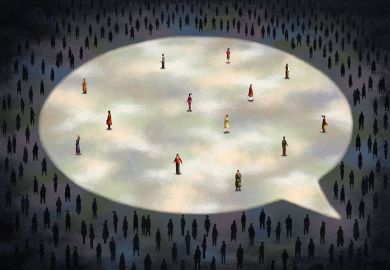Theatre historians cannot be Whiggish,'' says Peter Holland. His survey of English Shakespearean productions from 1989 to 1995 shows not progress, but an irregular plateau with defining features.
The Shakespeare we see is grounded on formal and objective factors. It is dominated by the Royal Shakespeare Company, which in turn is governed by the need to find audiences corresponding to its three Stratford theatres. Time and again Holland returns to 1508, the seating capacity of the main house. The Swan takes only 458, and The Other Place 140. So the company economics depends entirely on getting the Royal Shakespeare Theatre right. The main assumption is that it houses a tourist audience; and the RSC believes that "a particular Shakespeare play will produce a particular size of audience". Romeo and Juliet will generate good business even if critics give it the thumbs-down. Schools parties have to see it.
Other main-house choices may depend on the availability of an actor, and the play's place in the frequency cycle. Adrian Noble put on King Lear in 1993 because he could get Robert Stephens, and the previous King Lear was in 1990 (three years is the minimum gap).
The main-house production style is opulent, geared towards giving people "a good night out". People expect visual extravagance, as in musicals; and the RSC connection with musicals is long established. Beerbohm Tree's "upholstered Shakespeare'' has silently returned, masked as the policy of higher investment in productions. The management reckons that the RST needs to attract the Cats audience.
All this is a bloodless revolution. "Minimalism gave way to splendour'' is the RSC story of the 1980s, continued into the present day. The rise of the designer is the new fact. Designers are appointed by directors and cannot supersede them, but their collaboration is the axis of production. Holland makes clear that the set-model has to be constructed in advance and made available for the whole of the rehearsal period. It cannot therefore be much influenced by the actors, however complex, unworkable, and even dangerous the set may be. Set design is the grand a priori from which all follows.
The tyranny of the set is necessarily relaxed in the Swan, but here too formal considerations apply. Holland might have made more of the changes to the Swan since its opening in 1986. The stage started as a narrow tongue, a dangerous and exciting catwalk. I then thought the Swan a cockpit theatre, good for tragic as well as comic effects. Since then the taste for blood has diminished with the widening of the stage. The Swan is now reckoned "ideal for comedy''. It also creates a different relationship between actors and audience. "Where one group (main house) patronises its audiences, the other respects them". For the elect, the Swan is Unser Shakespeare.
Broadly, the Swan is the container for the outer canon. The dividing line was laid down in 1981, when Trevor Nunn's superb All's Well That Ends Well with Peggy Ashcroft and Harriet Walter played often to tiny audiences in the main house. That kind of risk is no longer permissible. The next All's Well That Ends Well went to the Swan. It is possible to overstate the dominance of the "core canon''. In the period of this book, Holland saw 25 Shakespeare plays at the RST. Still, a third of the canon, under present policies, can never make it to the main house.
What sort of company is the RSC? There is a fault line, running through two statements, both true: "the RSC is not a company of actors'' and "the RSC's work is predominantly actor-centred''. Limited-term contracts, not continuity, govern the workforce. The RSC today is like the Royal Navy in the 19th century, riddled with organisational problems and beset with anomalous tasks, but without a serious competitor.
Most of this book is a serial review. The net is cast wide. Holland has seen Northern Broadsides, Thetre de Complicite, Cheek By Jowl and numerous others. There is no monolith Shakespeare. The productions are strained through a sensibility that is liberal, alert to the tension between text and performance, delighting to track the intellectual through-line. Holland exposes, for example, the uselessness of the Fascist analogue in The Merchant of Venice set in the Italy of the 1930s. There are genuine insights. Richard III is "the greatest of all English plays of female grief, the one play to be set besides Euripides' Trojan Women''. After the interval in Peter Hall's 1994 Hamlet, Gertrude "reject(ed) her sexuality at precisely the same moment when Ophelia would most fully express hers".
English Shakespeares can be read for its insights, and for its reactions to diverse stagings. But its main importance is the analysis of systemic factors. This is an indispensable report on what Holland could well have entitled "Our Theatres in the 1990s".
Ralph Berry is author of Shakespeare in Performance.
English Shakespeares: Shakespeare on the English Stage in the 1990s
Author - Peter Holland
ISBN - 0 521 56405 0 and 0 521 56476 X
Publisher - Cambridge University Press
Price - £37.50 and £13.95
Pages - 295



